Washoku is traditional Japanese food, a crucial part of Japanese culture. In this article, we explain the characteristics of washoku and introduce several classic washoku dishes. Every meal should end with dessert, so of course we end this article on a sweet note by introducing Japanese traditional sweets called wagashi.
Table of Contents
- What is Washoku?
- The Uniqueness of Japanese Traditional Food
- Japanese Traditional Dishes: Washoku Dishes
- Japanese Traditional Sweets: Wagashi
- Takeaway
What is Washoku?

Washoku is a meal that combines side dishes (or rice accompaniments, called okazu) cooked using seasonal vegetables and fish with white rice, soup, and pickles (called tsukemono). Although this is the basic form of washoku, there is actually no clear description of what a washoku meal should be like.
Washoku is a UNESCO Intangible Cultural Heritage of Humanity
UNESCO Intangible Cultural Heritages are intangible cultures such as performing arts and traditional craft techniques that UNESCO recognizes as being closely related to the history and lifestyle of a particular civilization or land.
According to the Japanese Ministry of Agriculture, Forestry and Fisheries (MAFF), the four features of Washoku are:
-
Esteemed regard for the inherent flavours in diverse and fresh ingredients
-
Nutritional balance to support a healthy diet
-
Expression of the beauty of nature and the changing of season
-
Closely related to annual events like New Year
The above features were the focus of the application submitted to UNESCO for the recognition of washoku as an intangible cultural heritage. In December 2013, washoku was registered as a UNESCO Intangible Cultural Heritage. Aside from washoku, other cuisine recognized as intangible cultural heritages are French, Mexican and Mediterranean cuisine.
※ UNESCO, “Washoku, traditional dietary cultures of the Japanese, notably for the celebration of New Year” ※ MAFF, “「和食」がユネスコ無形文化遺産に登録されています”
Writer's Pick
Washoku, Characteristics & Features
Let’s explore and learn what makes Japanese traditional food different compared to other forms of cuisine.
「一汁三菜」Ichiju Sansai Concept

In Japan, there is a food culture of preparing one soup and three side dishes to create a nutritionally balanced meal. This concept「一汁三菜」is the basis of washoku. Ichiju (一汁) refers to the one soup of miso soup or a clear soup; Sansai (三菜) refers to the three side dishes that should consist of vegetables.
Provided in a larger serving compared to side dishes is the「主菜 shusai」or main dish of fish or meat. Side dishes like ohitashi (おひたし - boiled vegetables in dashi soysauce) and aemono (和え物 - chopped fish or vegetables in dressing) are called「副菜 fukusai」, another word for side dish. Pickles or Tsukemono (漬物) are not counted as fukusai. Aside from pickles, 3 or more side dishes are usually prepared.
The staple food of Japanese is white rice. Combining white rice with “one soup three dishes” makes a complete basic washoku meal. There are also dishes like soba and sushi that do not fulfil the concept of “One Soup Three Dishes” but are still categorised as washoku.
Recommended Reading:
The Secret is The Soup Stock

The secret to the deliciousness of Japanese traditional food is dashi (出汁 - soup stock). Dashi is used as a base seasoning in washoku made by boiling seafood and mushrooms. The soup stock adds bold combinations of flavours into a dish, so sufficient that minimal to no further seasoning is required. Therefore, it is a characteristic of washoku that many dishes are seasoned relatively lightly compared to international cuisine.
The main types and characteristics of dashi are introduced below:
-
Niboshi (煮干) - Boiled then dried small fishes like sardines, used in miso soup
-
Katsuoboshi (カツオ節) - Smoked then dried bonito in flake form, used in simmered dishes and soups
-
Konbu (昆布) - Kelp, used in chawanmushi (Japanese steamed eggs) and yosenabe (hot pot)
-
Shiitake (椎茸) - Shiitake, a type of mushroom, used in chawanmushi and stir fry
Dashi made from dried bonito flakes and dried sardines in particular are rich in a fish-based umami ingredient called inosinic acid. Whilst konbu dashi is rich in glutamic acids, a plant-derived umami ingredient, as well as dietary fibres, minerals and calcium.
Light yet full of flavour and nutrition, washoku is popular not just in Japan but around the world.
Also, learn about the other types of Japanese mushrooms in our mushroom article.
Seasonal Ingredients for the Freshest Taste
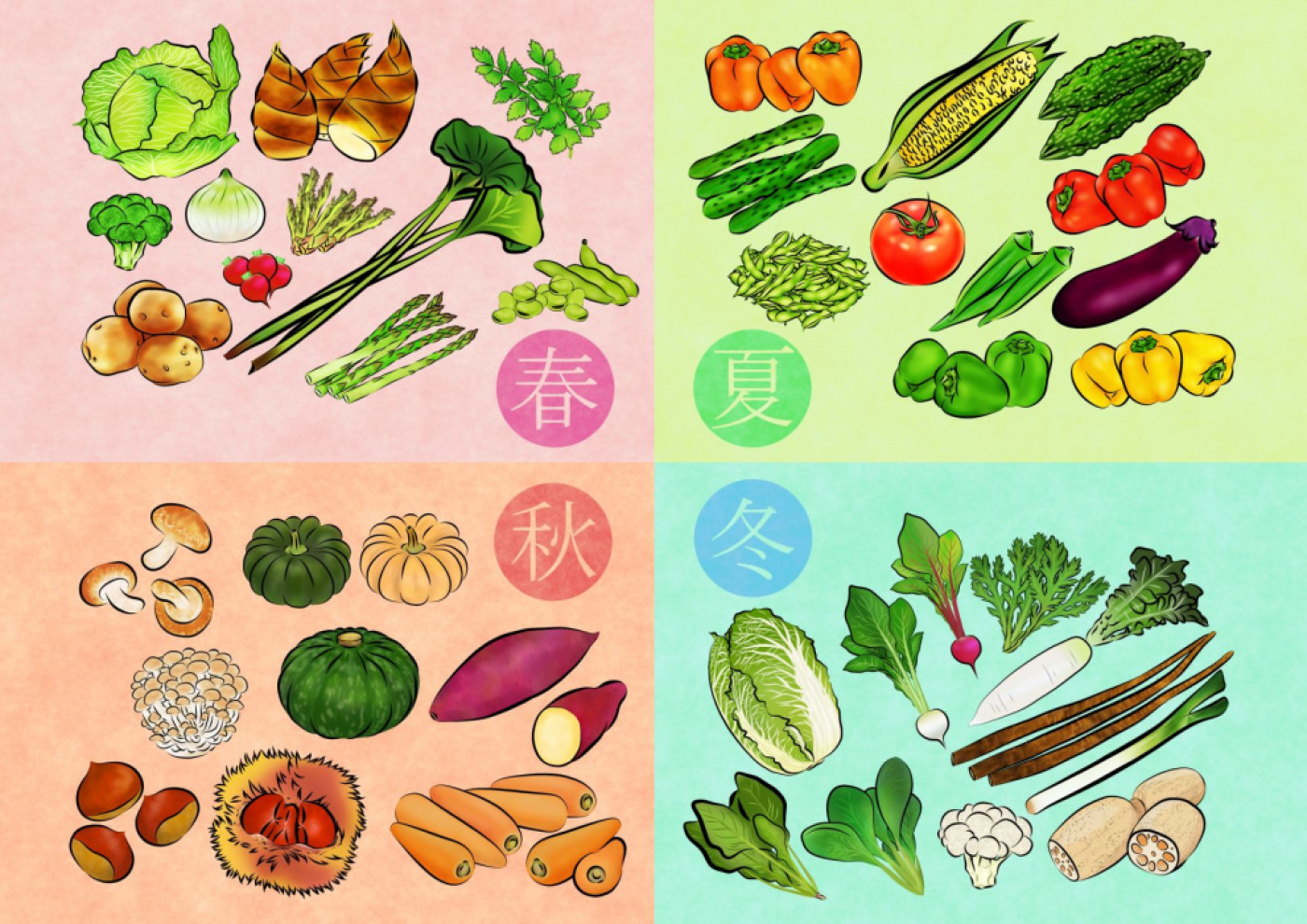
Another characteristic of washoku is the usage of seasonal ingredients. Japan experiences the four seasons of spring, summer, autumn and winter very distinctly. The benefits of using seasonal vegetables and seafood is that ingredients are at peak nutrition and deliciousness.
Seasonal ingredients are indispensable when preparing traditional Japanese food. There’s bamboo shoots and cabbage in spring, cucumbers and tomatoes in summer, saury and chestnuts in autumn, and radish and yellowtail in winter.
Read more about vegetables unique to Japan in our Japanese vegetables article.
Close Involvement with Traditional Japanese Events
Japanese food culture is closely related to celebrations of annual events in Japan, and this applies to washoku as well.
For example, for New Year’s Day in Japan, an assortment of various traditional Japanese New Year’s dishes are enjoyed. There’s osechi ryori (おせち料理), a single or multi-layered bento box consisting of multiple side dishes to be eaten over the first few days of the New Year. There’s also zenzai (善哉), a traditional New Year dessert of red bean soup with mochi or dango, and toshikoshi soba (年越しそば) or “crossing the year” soba.
Japanese Traditional Dishes: Washoku Dishes
Discover washoku dishes in this part of the article.
Sushi 寿司
The sushi we love to eat actually started during the Edo period when it was called「江戸前寿司 edomaezushi」or Edo-style sushi. It was a popular local specialty in Edo (old Tokyo).
In addition to long-established sushi-ya, kaiten sushi or conveyor belt sushi restaurants that serve sushi at reasonable affordable prices have become popular in recent years. The 2 sushi establishments are very different in their ordering systems, seating plans, and prices. You can read more about it here.
There are various types of sushi such as:
Nigiri Sushi (握り寿司 nigirizushi)
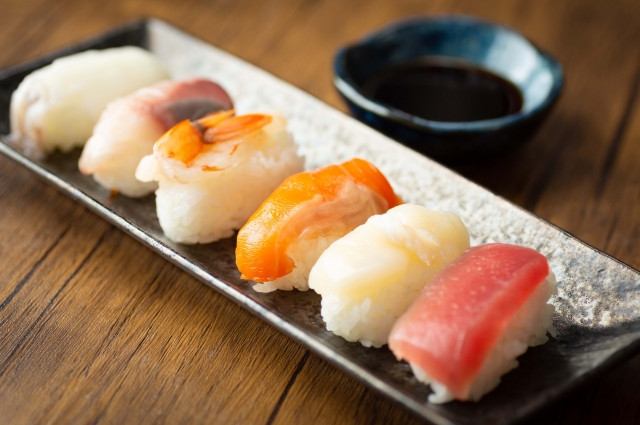
Nigirizushi is made by squeezing vinegar rice called 「シャリ shari」into a small piece and putting 「ネタ neta - ingredients」on top of the shaped rice. Depending on the store, a small dab of wasabi may be placed between the shari and neta.
Gunkan Sushi (軍艦巻き gunkanzushi)
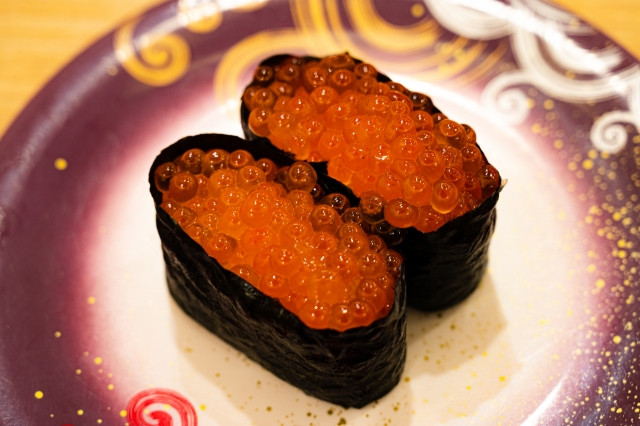
Gunkanzushi is named after its resemblance to a battleship. Gunkanzushi is made by wrapping a strip of seaweed around a small piece of shari shaped the same way as nigiri sushi. A small space is left on top of the rice as a makeshift bowl, and the space is filled up with neta as toppings.
Maki Sushi (巻き寿司 makizushi)
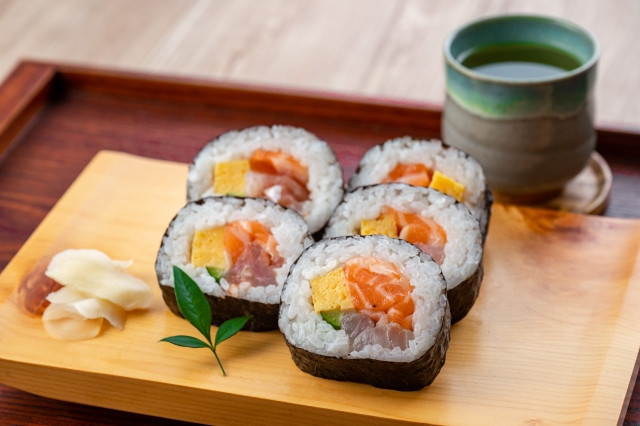
Makizushi is made by spreading a layer of vinegared rice over a sheet of seaweed, adding neta on the layered rice, rolled up into a sushi roll, then cut to size. Makizushi comes in different thicknesses; futomaki (太巻き) is fat or thick sushi roll, while hosomaki (細巻き) is thin sushi roll.

Ehomaki (恵方巻), a traditional food eaten to celebrate Setsubun to welcome spring in Japan is actually an uncut futomaki.
Chirashizushi ちらし寿司
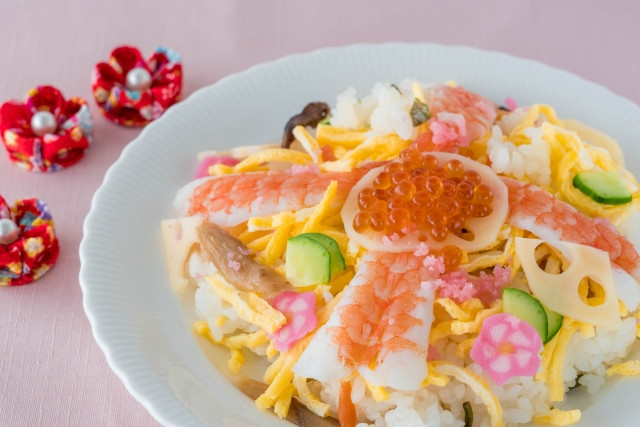
Chirashizushi is unlike the typical image of sushi, more closely resembling a donburi (rice bowl). It is made with a combination of various ingredients atop vinegared rice. It is customary to eat chirashizushi for Hinamatsuri and celebrations.
Recommended Reading:
Tempura 天ぷら

Tempura is a dish where ingredients are coated in a batter of eggs, flour and cold water then deep fried. It is said that this cooking method was introduced from Portugal during the Muromachi period. At that time, cooking oil was a luxury item so tempura was considered a luxury dish. During the Edo period, oil production increased allowing more people to enjoy the dish, and tempura became popular as a local delicacy in Edo.
A variety of ingredients can be used in tempura such as vegetables, wild vegetables, and seafood depending on the season and region. In western Japan, satsuma-age (さつま揚げ - deep fried fish paste) and jakoten (じゃこ天 - Ehime local specialty of deep fried fish paste) are considered tempura.
Unagi 鰻
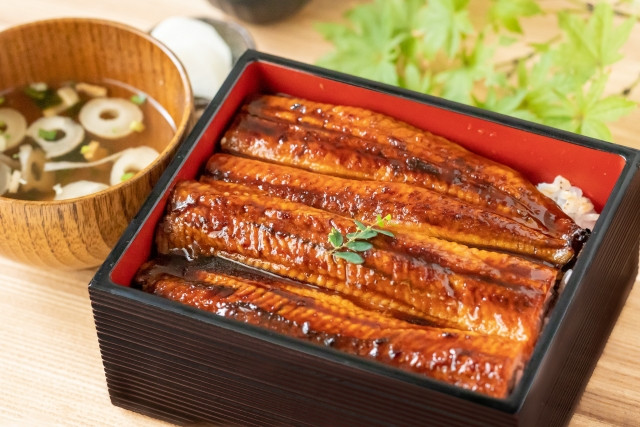
Unagi is freshwater eel and is used in Japanese cuisine as a high-class ingredient. There are many eel specialty stores in Japan. Here’s an idea - a gourmet trip exploring different regions and their stores trying out different ways of cooking unagi like kabayaki, unadon, and shirayaki.
Unagi kabayaki is made by skewering eel on a stick, then carefully grilling it over a charcoal fire whilst basting it with special sauce made from soy sauce, mirin, sugar, and etc. The sweet savoury smell of grilling unagi will work up your appetite. Shirayaki is cooked the same way as kabayaki sans the sauce allowing you to enjoy the unagi’s original flavour.
“Unagi Day” does not exist, but “Day of the Ox” when people eat unagi as a stamina recovery dish might as well be it (unagi day). Day of the Ox falls in summer, at a time when many people fall sick or feel lethargic from the heat.
Udon うどん
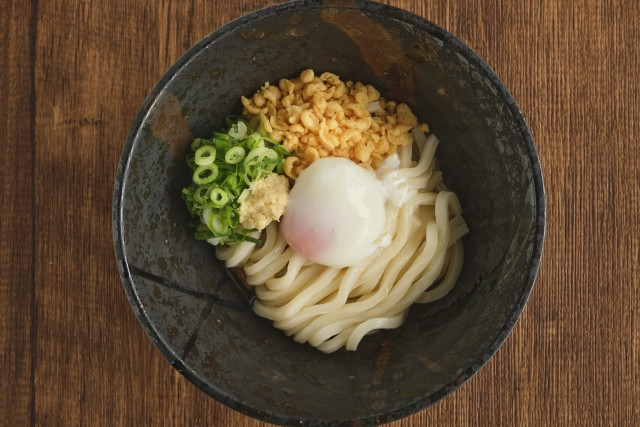
Udon is a noodle dish made by adding salt water to flour to create a dough, kneading the dough, cutting it into strips, then boiling it. Udon is characterised by a chewy texture that makes your throat feel good. Despite how thick it looks, udon is easily digested making it suitable to eat even when not having an appetite or when sick.
Several parts of Japan have “local udon specialties”. Such as:
-
Sanuki Udon from Udon Prefecture, Kagawa
-
Mizusawa Udon from Gunma Prefecture
-
Inaniwa Udon from Akita Prefecture
These three are known as「日本三大うどん nihon sandai udon」, the three greatest udon in Japan.
The dashi broth for udon in Kansai and Kanto are very different. Kansai’s udon broth is characterised by its light taste made with light soy sauce whilst taking advantage of the flavour from its dashi, usually konbu. In contrast, Kanto’s udon broth uses dark soy sauce as seasoning.
Soba 蕎麦・そば
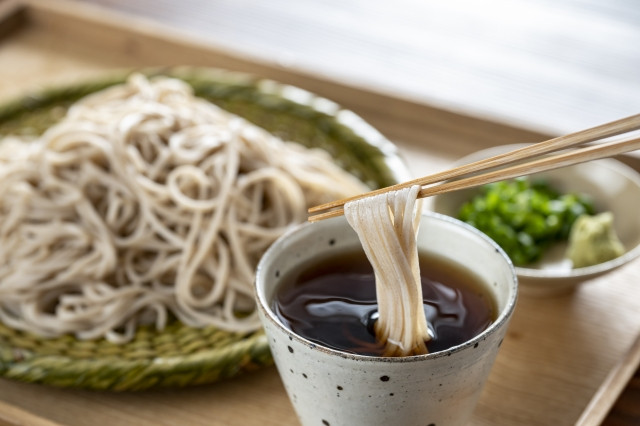
Soba is a noodle dish made by combining water and wheat flour to finely ground buckwheat flour, stretching the dough thinly, and cutting it into thin strips. There are two ways to enjoy soba; tsukesoba (つけそば) and kakesoba (かけそば).
Tsukesoba is boiled soba with a dipping sauce called「そばつゆ soba tsuyu」made from dashi, soy sauce, mirin and other seasonings. A good practice when eating tsukesoba is to only dip, and not let your noodles soak in the sauce. When dipping, it is best to only dip the lower half of the noodles in the tsuyu. In addition, avoid breaking the noodles by biting but slurp up the whole strand then chewing. To change up the flavours, add condiments like green onions and grated radish to taste. At the end after finishing your noodles, add「そば湯 sobayu - water used to boil soba」to the remaining soba tsuyu and drink up the “soup”.
Kakesoba is soba served in a bowl of soup. It was developed during the Edo period as an easy way to eat soba. Kakesoba is usually served hot with toppings like tempura, eggs, spring onions and other types of toppings.
Kaiseki Ryori 懐石料理
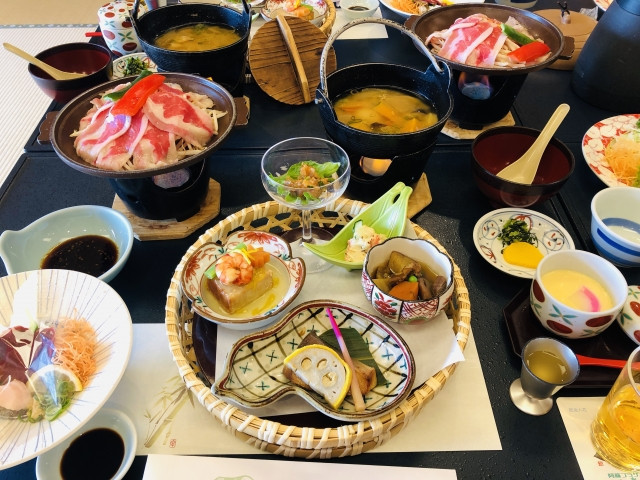
Kaiseki ryori is a traditional Japanese course meal. Kaiseki ryori was said to have been started by Sen no Rikyu, the father of tea ceremonies in Japan, during the Sengoku period as a full course meal to entertain guests before having tea.
A kaiseki ryori course consists of rice, soup, three side dishes, and pickles. Sounds familiar, it is the epitome of「一汁三菜」, one soup three dishes. The three side dishes are composed of a vinegared dish, a simmered dish, and a grilled dish.
In recent years, the number of side dishes for a kaiseki ryori course meal have increased. Kaiseki ryori can be enjoyed at restaurants as luxurious meals or at some ryokans.
Japanese Traditional Sweets: Wagashi
Let’s end this article with some desserts!
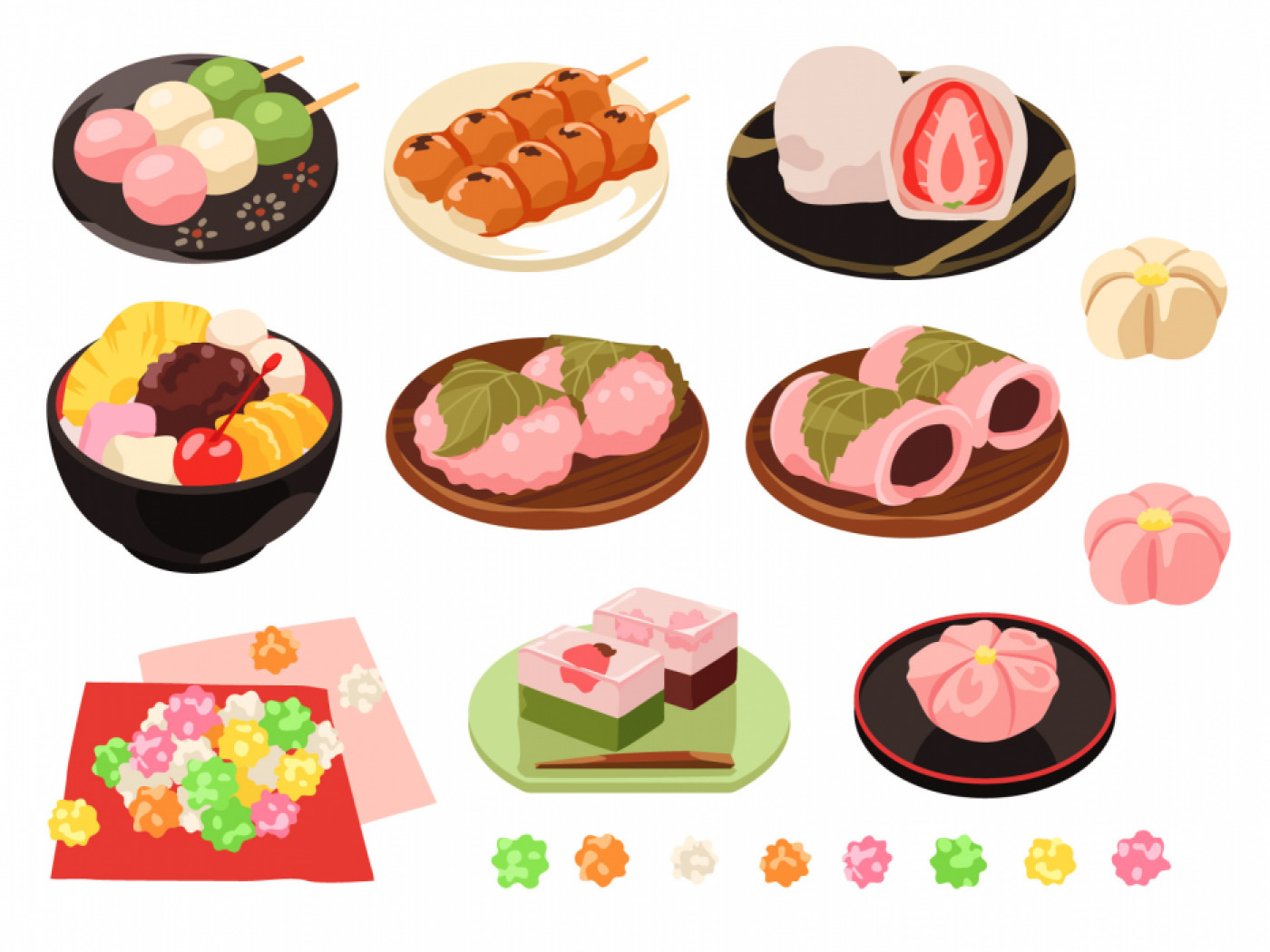
Part of Japanese traditional food culture and washoku is Japanese traditional sweets called wagashi (和菓子).
The creation of wagashi is closely tied with Japanese history. Many wagashi are said to have been made during the Edo period. Created by incorporating various ingredients whilst influenced by exchanges with foriegn countries and culture, wagashi is deeper than what we think.
Wagashi Started as Fruits
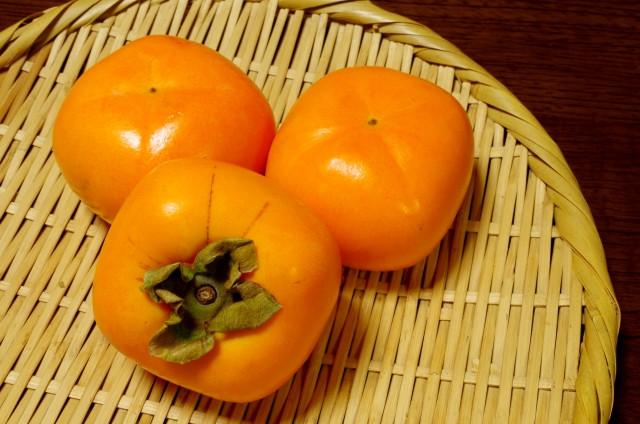
During the Yayoi period, the sweetness and deliciousness of fruits were especially appreciated, and it was customary to eat fruits and nuts as snacks. This custom of eating fruits as a snack is said to be the beginning of「果子 kashi - fruit」that turned into「菓子 kashi - confectionery/sweet」.
Chestnuts and persimmons in particular were cultivated in Japan during that time. Following the development of food culture, harvested fruits were dried for preservation then crushed into small pieces. It is said that dango (団子) were created when finely crushed nuts that became exposed to water were rolled up and heated.
After that, mochi (もち) which is said to be the oldest processed food in Japan was created. At that time, mochi made from rice which is considered an important ingredient were treated as sacred.
Sweets of the Season
Typical of Japanese traditional culture and a key characteristic of washoku is using seasonal ingredients. Naturally, wagashi is the same.
There are wagashi that are representative of the seasons in Japan as well as customary for certain events and celebrations, like:
Sakuramochi 桜餅
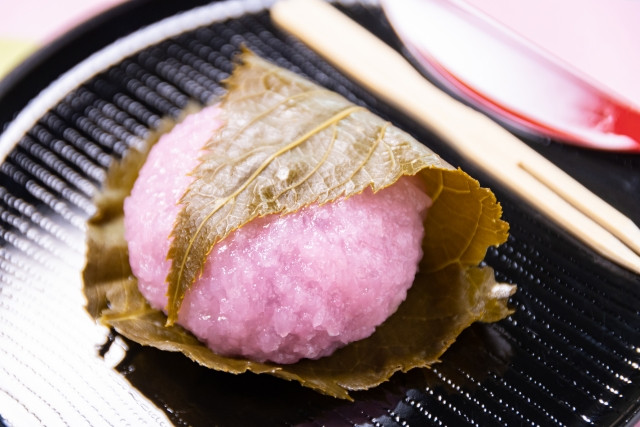
Sakuramochi is a Japanese sweet made by wrapping a pale pink mochi in salted cherry blossom leaf, said to be the symbol of spring. The history of sakuramochi began in the Edo period when it was used by monks to entertain grave visitors. In recent years, it has become a custom to eat sakuramochi on Hinamatsuri (Girl’s Day).
Kashiwamochi 柏餅
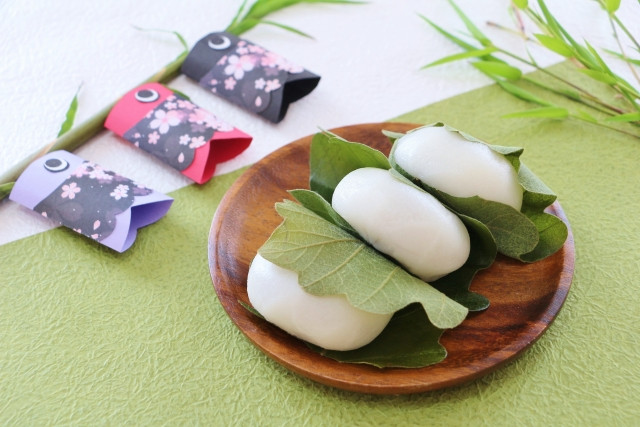
Kashiwamochi is a wagashi made by wrapping joushinko mochi (high-grade rice flour mochi) in kashiwa leaf (oak tree leaf). The inside of the mochi has filling like red bean or miso bean paste. In Japan, it is customary to eat kashiwamochi during the Dragon Boat Festival on Children’s Day. Kashiwa is regarded as a symbol of prosperity to descendants because old leaves do not fall until new ones appear.
Mizu-Yokan 水羊羹
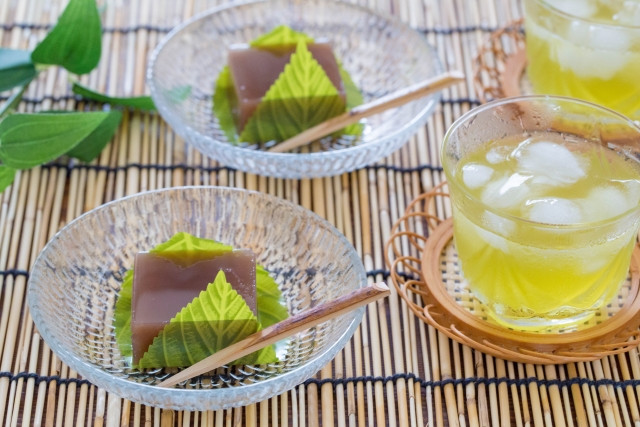
Mizu-yokan is a type of yokan made by hardening red bean paste with agar. It has higher water content than ordinary yokan, and is characterised by a light and soft texture. It is said that it was first made as a dessert side dish for osechi ryori during the Edo period. Nowadays, it is a popular cooling and refreshing dessert to overcome the hot summers.
Wagashi and Japanese Tea Ceremonies
Although any wagashi goes well with tea, there are wagashi that are often served at tea ceremonies to go with matcha. These wagashi can be divided into two types; 「主菓子 omogashi」main sweet and 「干菓子 higashi」dried sweet.
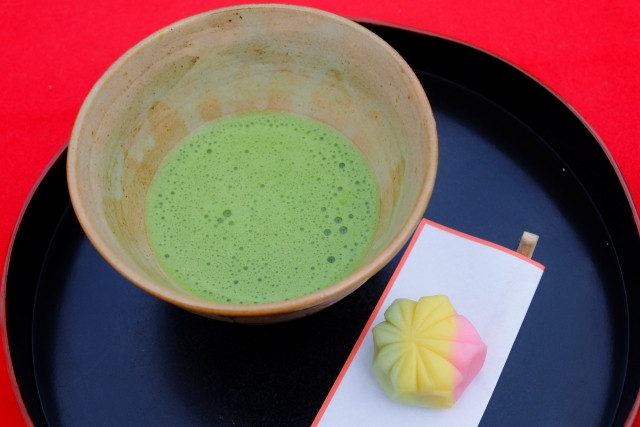
Omogashi is a Japanese sweet meant to be eaten with strong matcha - koicha (濃茶). Steamed manjuu (饅頭) with red bean filling, Nerikiri (練り切り) which is a colourful white bean jam confectionary decorated to match the seasons, and Namagashi (生菓子) are usually selected.
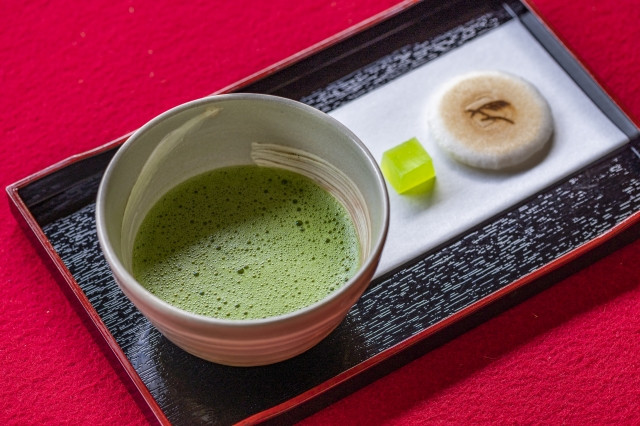
Higashi matches better with light matcha - usucha (薄茶). Colourful star-shaped sweets konpeito and sweet rice crackers are classified as higashi.
Takeaway
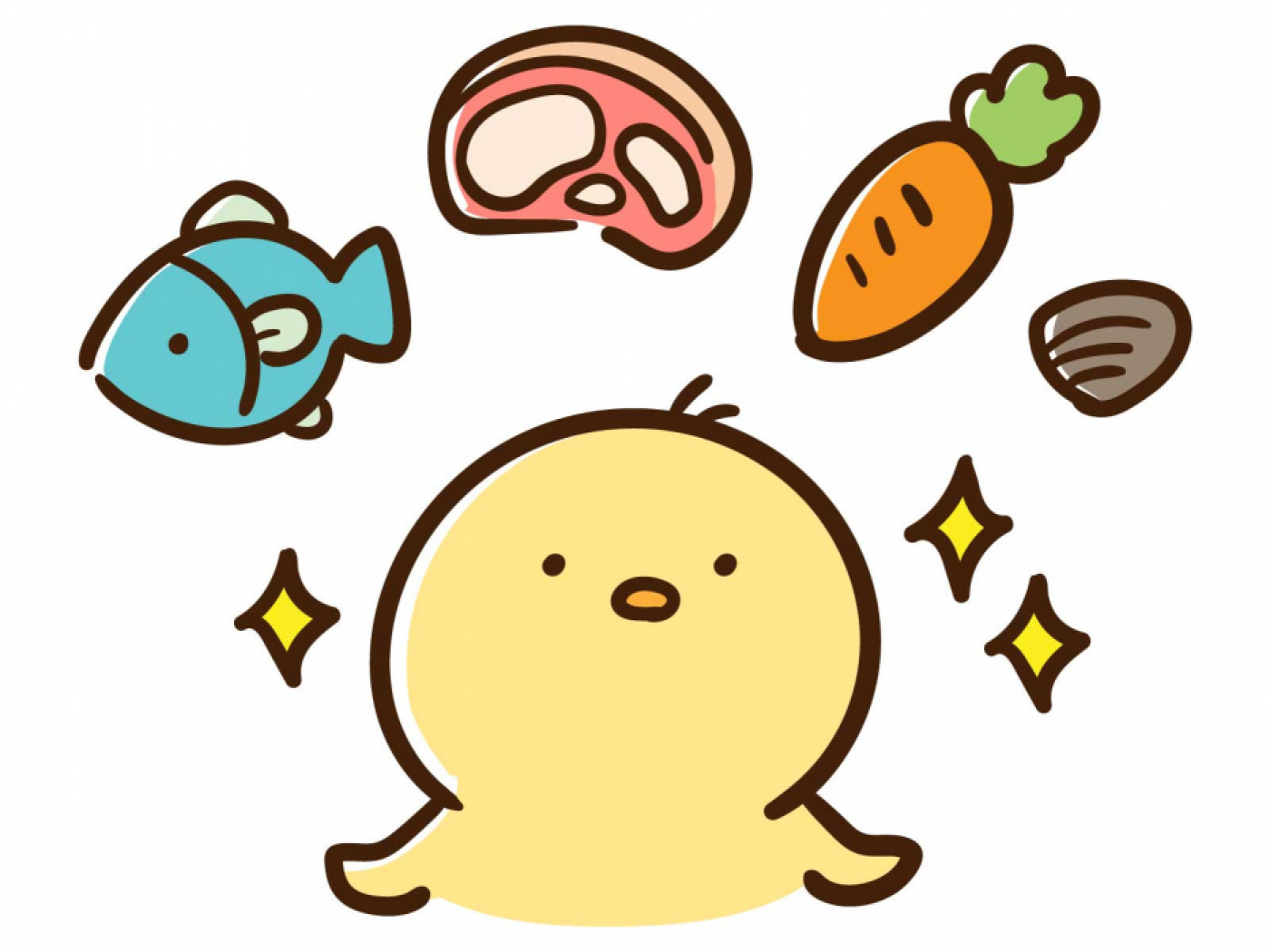
Washoku and wagashi are some of the greatest representations of Japanese food culture. Washoku is nutritionally balanced and healthy to consume, whilst wagashi adds a little bit of sweetness to your day. One of the best ways to experience the deliciousness and freshness that is nature’s finest produce is partaking in some washoku where every ingredient can truly shine.









 (2).png)


























